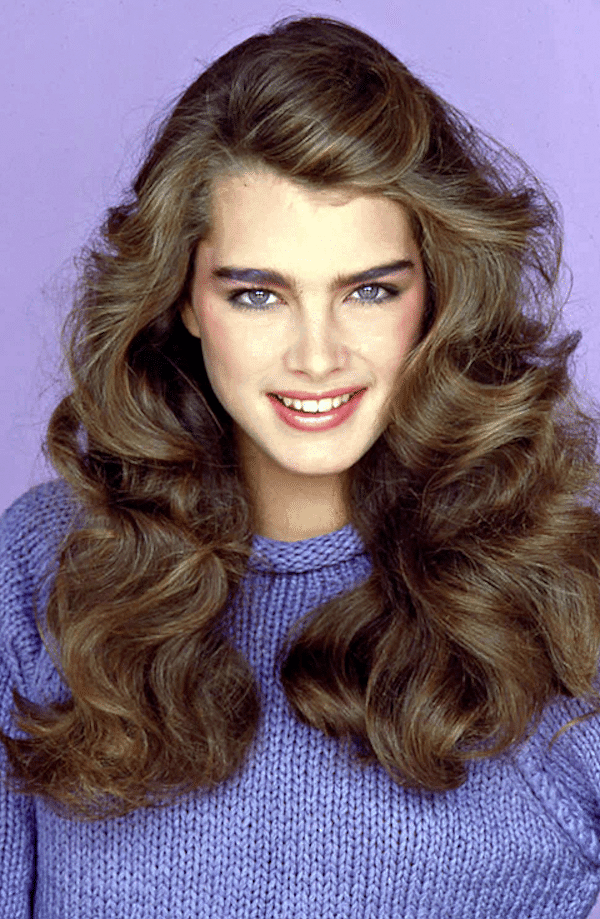Eyebrows are more than just lines of hair on our foreheads that we pluck, wax, fill in and wish were thicker or thinner. Their main function, one that might not still apply as much, is to keep sweat, rain, and dirt out of our eyes. We also have eyelashes for that. What eyelashes can’t do, however, is convey emotion.
“They’re such powerful message givers,” said professor of ophthalmology at the University of British Columbia, Jean Carruthers, MD, in a Yahoo! Health article. “The eyebrows show whether you’re female or male, whether you’re young or whether you’re older, whether you’re interested, dissatisfied, angry, curious, or incredulous. Eyebrows really are our big signalers.”
In addition, eyebrows can help us differentiate between individual faces.
One study by the Department of Brain and Cognitive Sciences, at MIT, looked into participants ability to recognize familiar faces. By modifying the images and removing the eyes or eyebrows of people such as Richard Nixon and Wynona Rider, researchers were able to find that without eyebrows only 46% of the faces were recognized. Whereas if the eyebrows remained, but the eyes were removed, 56% of participants were better at identifying the faces.
The allure of eyebrows and our grooming methods for them has skyrocketed in recent years and according to the NPD group, American’s spent over $160 million on eyebrow maintenance in 2015. Keeping up with the new, and sometimes weird, eyebrow trends takes its toll on our budgets and brows. As a teenager, I plucked most of mine out, you know, because having a line of individual hairs was cool. Pretty soon after, Cara Delevigne became famous as did having bushy, full brows. I’m still trying to grow out my sadly thinned eyebrows scattered with regretful bald patches.
The internet has bought us trends of feathered brows, Christmas brows, barbed wire brows, squiggle brows and even braided brows, this year. Still, most of these are for creative purposes only. Not actually worn IRL. I’m hesitant to see what’s next. And, kind of excited.
Eyebrows have gone through many phases throughout history and braided brows aren’t as alarming as some of the ones pre-beauty bloggers. Here is a brief timeline of eyebrow trends:
Ancient Egypt

As shown through artwork, Ancient Egyptians outlined their eyes in heavy kohl to prevent disease, sun glare, insects and it later became part of their fashion. They also apparently drew over their eyebrows with kohl and carbon, as a way of balancing the thickness of their bold eye makeup. As well as eye makeup, henna was included in a lot of beauty rituals to help dye nails and hair. While, berries were used for blush and lip color.
When one of their cats passed away, Ancient Egyptians would shave off their eyebrows and remain in mourning until they had grown back.
Ancient Greece

Women of this time are depicted as having thick, heavy, natural brows. Married women had subtler brows and, to show their status, single women wore darker brows. As natural eyebrows were a sign of beauty, many women had unibrows and even drew them on if they lacked in hair with “dark pigment”. I can totally relate. Maybe this was the beginning of women buying into products to keep up with the standards of beauty and not for disease preventative reasons like in Ancient Egypt.
However, this wasn’t the greatest time for women. They were seen, as in a lot of history, as second-class citizens and whose main roles were staying at home and having children.
Ancient Rome

Similar to Ancient Greece, the women of Ancient Rome kept their eyebrows natural and dark as a sign of intelligence. Again, if they lacked the desirable unibrow, they would connect the two with natural beauty products.
Susan Stewart, the author of Cosmetics and Perfumes in the Roman World, writes…
” Idealism is the rhetoric of the visual image and, just as pictures of women in the fashion pages of today’s magazines are airbrushed and photoshopped, presenting us with women who bear little resemblance to ordinary people, a similar contrast existed between the representation of women in Roman art and their counterparts in real life.”
Tang Dynasty

Women had a lengthy beauty ritual similar to that of today in the Tang Dynasty, consisting of up to seven steps; Powder, rouge, lipstick, eye makeup, and eyebrows were all to be “made up” during this process. Throughout this era, many varying eyebrow trends became popular enough to be named.
Website Women of China lists them…
“Tang Dynasty eyebrows painted in bluish black were called daimei, long, fine eyebrows were emei, and guangmei eyebrows were short and thick [as seen in the picture]. Eyebrow modes seen in the imperial palace included the yuanyang, xiaoshan, sanfeng, chuizhu, yueleng, fenshao, hanyan, fuyun, daoyun, and wuyue. Popular folk eyebrow styles included the liuye, queyue, kuo and bazi.”
Early Medieval Europe

Medieval women completely changed eyebrow trends altogether by removing them. This could have been because of lice, but the author of Classic Beauty: The History of Makeup, Gabriela Hernandez, told Bustle that it was more to get that classic egg look. Like me, the trends changed and eventually women wanted their hair back. Like mine, they didn’t grow back properly. But, they had rats!
“Women in the 1400s wanted to have high foreheads and an egg-shaped face, with small nose and lips. They saw this as resembling a child, innocent and pure,” Hernandez said. Adding that, “They used mice, or other furry animals in the rodent family to make small hair pieces for brows if the woman over tweezed and the hair did not grow back. This type of hair was replaced later on by human hair that came from the orient”
Elizabethan Times

Like celebrities and influencers today, Queen Elizabeth I had a following of admirers that emulated her hairstyle and color in order to feel slightly royal. As not everyone is a natural redhead, less than 2%, many women dyed their hair and eyebrows red or adorned wigs.
Yet, without salons or box dyes, people would make their own. Usually consisting of dangerous chemicals. Eyelashes in History notes, “one of them was a mixture of rhubarb juice and oil of vitriol; vitriol is pure sulfuric acid.” This damaged skin and made a lot of people’s hair fall out. Not exactly the desired effect.
Victorian Times

Women in the Victorian era did wear makeup, albeit a very little amount. They invented what is now known as “no makeup-makeup” by using lipsticks in similar shades to their own and bleach their skin with “super-rich digested things like arsenic, chalk, slate, and tea to maintain a whitish appearance.”
It was immodest to wear too much, or too bold of makeup. Queen Victoria, according to this Bust article, was said to think of makeup as “impolite” as it was only worn by sex workers and actresses. On the other hand, it also mentions that a lot of beauty books contained recipes to make a homemade rogue at the time. Women could have been wearing this at home, or slowly building up the pigment so as not to shock people.
The 1920s

The 20s were revolutionary in many ways aside from fashion and beauty. After years of protesting women were given the right to vote in the U.S.A.
Along with this, developments in technology, health and overall standards of living, women felt more in control of their lives. Birth control was starting to become available. Women were starting to feel free. Thus came the flappers.
Hair was short, dresses were sparkly and eyebrows were thin. Ridiculously thin. They were also excessively long, stretching much farther than their natural shape. Movie stars, such as Lillian Gish, were adopters of this look on screen, prompting the trend to reach audiences all over.
The 1930s

Eyebrows thickened slightly after the “roaring 20s”, and although they were still heavily plucked, the 30s brows had a natural length to them. The arches, such as Greta Garbo’s, opened up the face and lifted the eyes as women became more aware of their appearances through the media.
Like in Ancient Greece and Rome, if women couldn’t achieve the celebrated arch naturally they, “had their eyebrows plucked away entirely by overzealous beauty salons and had to ‘paint’ in their brows every morning.”
The 1940s

It could have been the war, rising tensions and a sadness that was felt throughout the world at this time that made everything more chaste. Fashion, society, and following after them, eyebrows, became more subtle, serious and less flamboyant.
The arch and upkeep were still there, but they were much fuller and less maintained than the previous decades. “Faces were flawless and fresh looking – the look was all-natural, never ‘painted on.’ Less was always better than more, which was good since most women were surviving on less and less in the early years,” writes Vintage Dancer blog.
The 1950s

As the College Fashion mentions 50s brows, “remained similar to that of the ’40s, with a defined yet natural-looking arch, but women began shading in their brows to achieve a bolder look.”
Women wearing a full face of makeup was now the norm, as was filling in brows shaped brows for a more refined look. Stars such as Marylin Monroe, Audrey Hepburn, and Elizabeth Taylor are still recognizable through their distinct style of eyebrows.
The 1960s

Like the 20s, the 60s were also revolutionary for women. Unlike the 50s, women were working more, which “increased the dissatisfaction among women regarding huge gender disparities in pay and advancement and sexual harassment at the workplace,” writes US News.
The second wave of feminism was born, the pill was introduced, fashion and beauty standards shifted. The “mod” look was popular, and one of the faces of style was Twiggy. Because of her short hair and overly coated eyelashes, the eyebrows were toned down a bit; They were natural, to give more focus to eyeliner flicks and heavy eyeshadows.
The 1970s
![]()
The 70s were a confusing time for eyebrows, as you can see from the direction Donna Summer’s are going in. She is beautiful enough to pull them off, but we can’t help but wonder, why?
Disco is undoubtedly one of the most monumental things to happen to fashion, music, and society. Vanity fair describes the 70s and genre as an “experience is recalled in an almost psychedelic haze.” It also led to big hair, big platforms, big collars, and questionable eyebrows.
The 1980s

Then came the bushy. In the 80s, it was all about being loud, colorful and over-the-top. Just think about the neon legwarmers! This full, bushy movement was lead, by the owner of the two best eyebrows then and now, Brooke Shields. Another example of this was in Madonna’s Papa Don’t Preach music video.
The frizz of hair and bracelets were all terribly much at this time. And, all impossibly beautiful. Just like any trend, it comes in cycles, and with the last few decades leaning more toward the natural look, it was only a matter of time before people became bored with luscious brows and plucked them all off.
The 90s-early 00s

Ah, the 90s. Not many of us really remember them, but they have a nostalgic feeling to them that conjures up memories of Cartoon Network, Britney Spears and the unescapable skinny brow trend. This look bled through into the early 00’s too and somehow everyone seemed to think they looked good. Why did we think they look good?
Supermodels and celebrities were some of the best (or worst) contenders in pencil brows. Kate Moss, Drew Barrymore and subsequently, “scene girls” were all prominent faces adorning the now regretful eyebrow trend. Inspiring many teenagers like myself to copy, and ruin, their eyebrows.
The early 2010s

Something changed in us once model Cara Delevigne rose to fame. We realized that thin brows were ugly. Again. Delevigne was a refreshing face. She had natural, unashamed facial hair that just a few years prior was considered “manly” and over-the-top. Women who, like the model, have naturally bushy eyebrows reveled in letting their natural hair grow back and skipping their wax appointments.
For many though, due to fair hair or damaged follicles, they couldn’t quite get that bushy look. Unskilled in tackling their sparse brows, many went overboard and the scouse brow went worldwide. Unnaturally block, dark and shaped eyebrows soon turned in to slightly toned down, ombre effect, Instagram brows. The hashtag “brows” on Instagram has 9,877,761 posts.
Now

Although some of the Instagram and scouse brow trend is hanging on, 2018 has for the most part seen an increase in natural, but still bushy, brows. They differ from their previous trend by having the appearance of being less manipulated and intentionally messy- giving them the name, probably after Glossier’s product, Boy Brows. There is a want for fuller brows, but without the excess of makeup and false look. Microblading (what is microblading?), or tattooing on semi-permanent brows is now available at most high-end beauty salons. Even Lena Dunham got hers done and filmed it for Vogue.
Like we mentioned earlier, there has also been a growth in innovative eyebrows online, such as the barbed wire brows, but apart from Instagram and fashion shows, we don’t really see this in day-to-day life.


